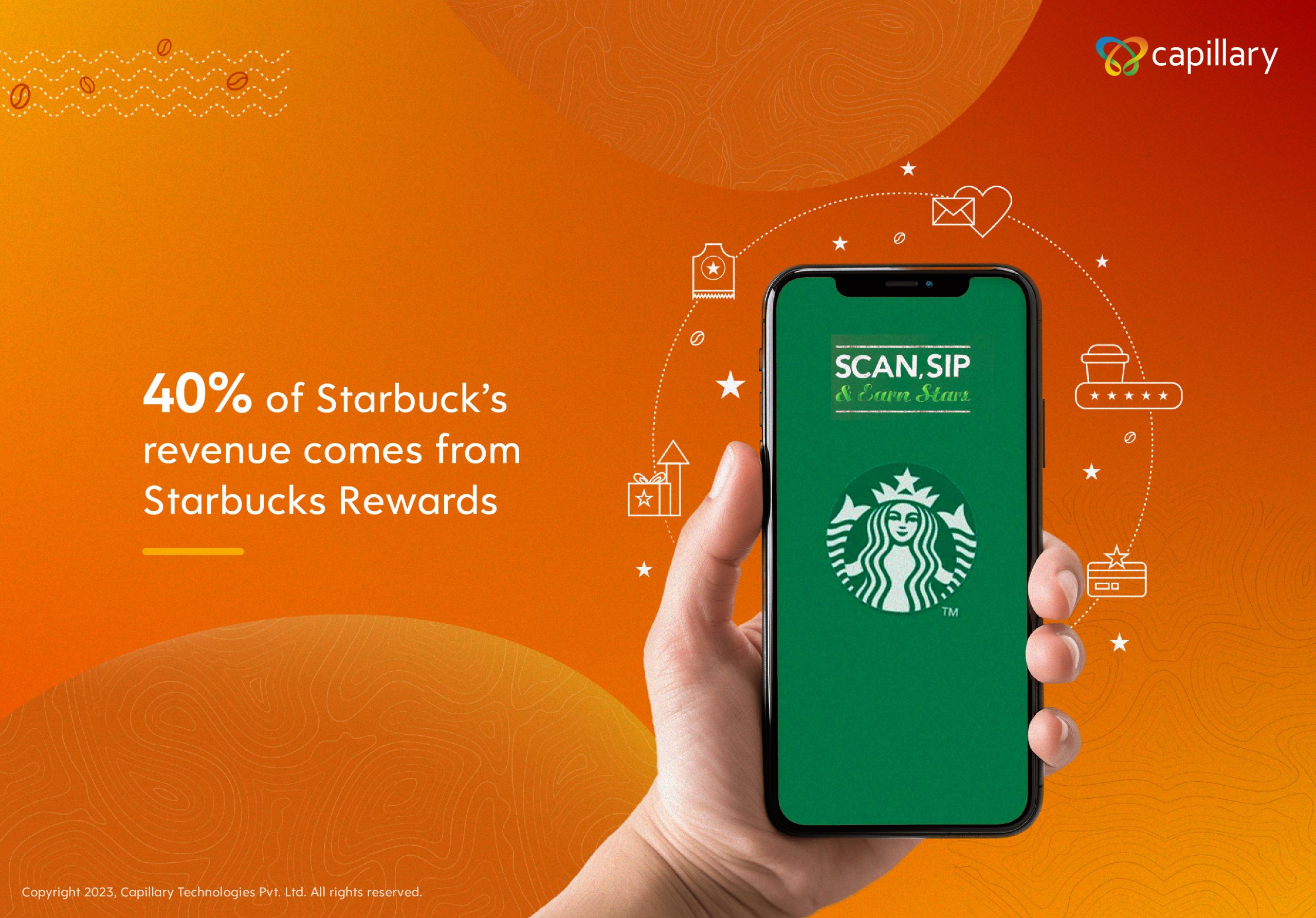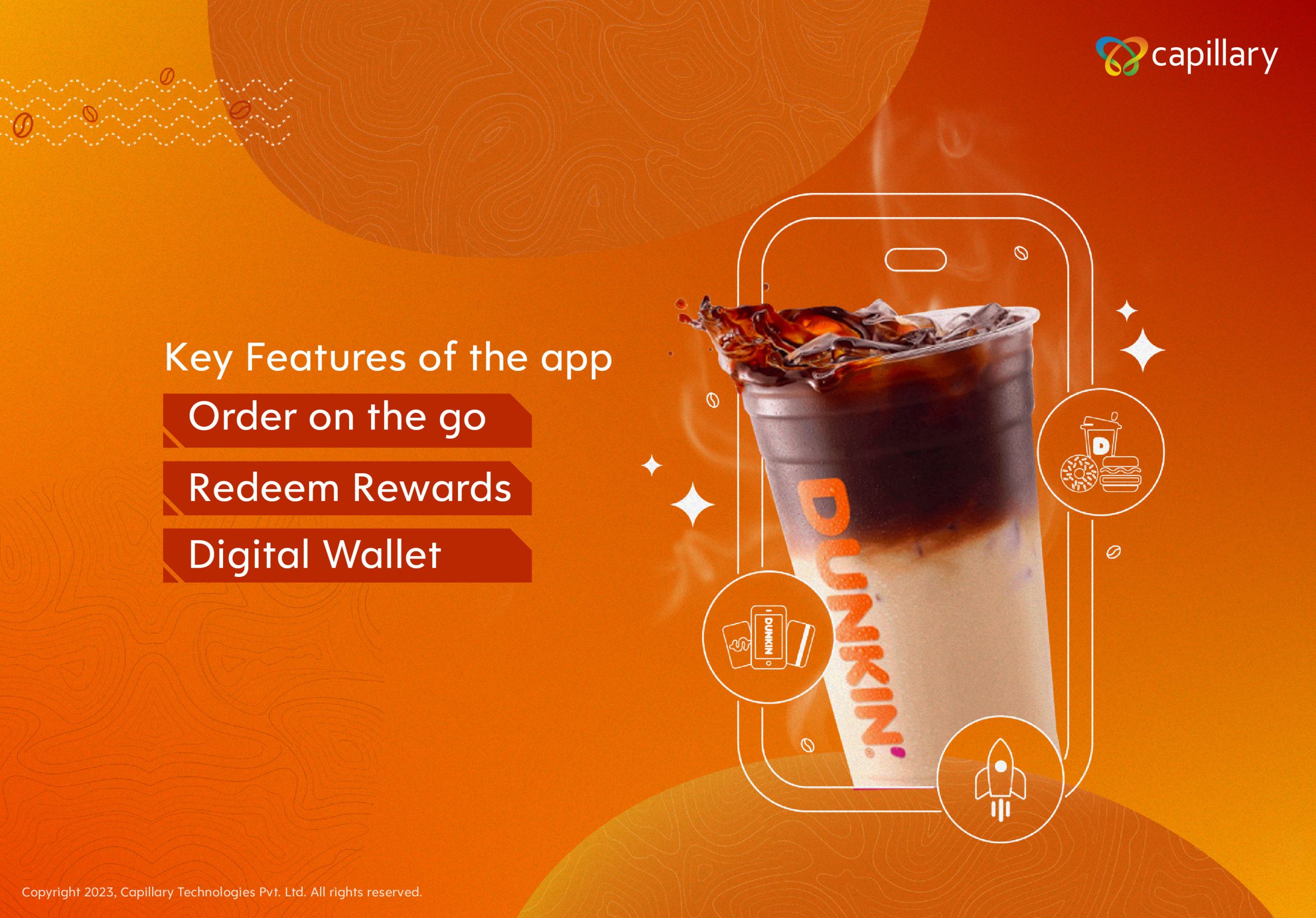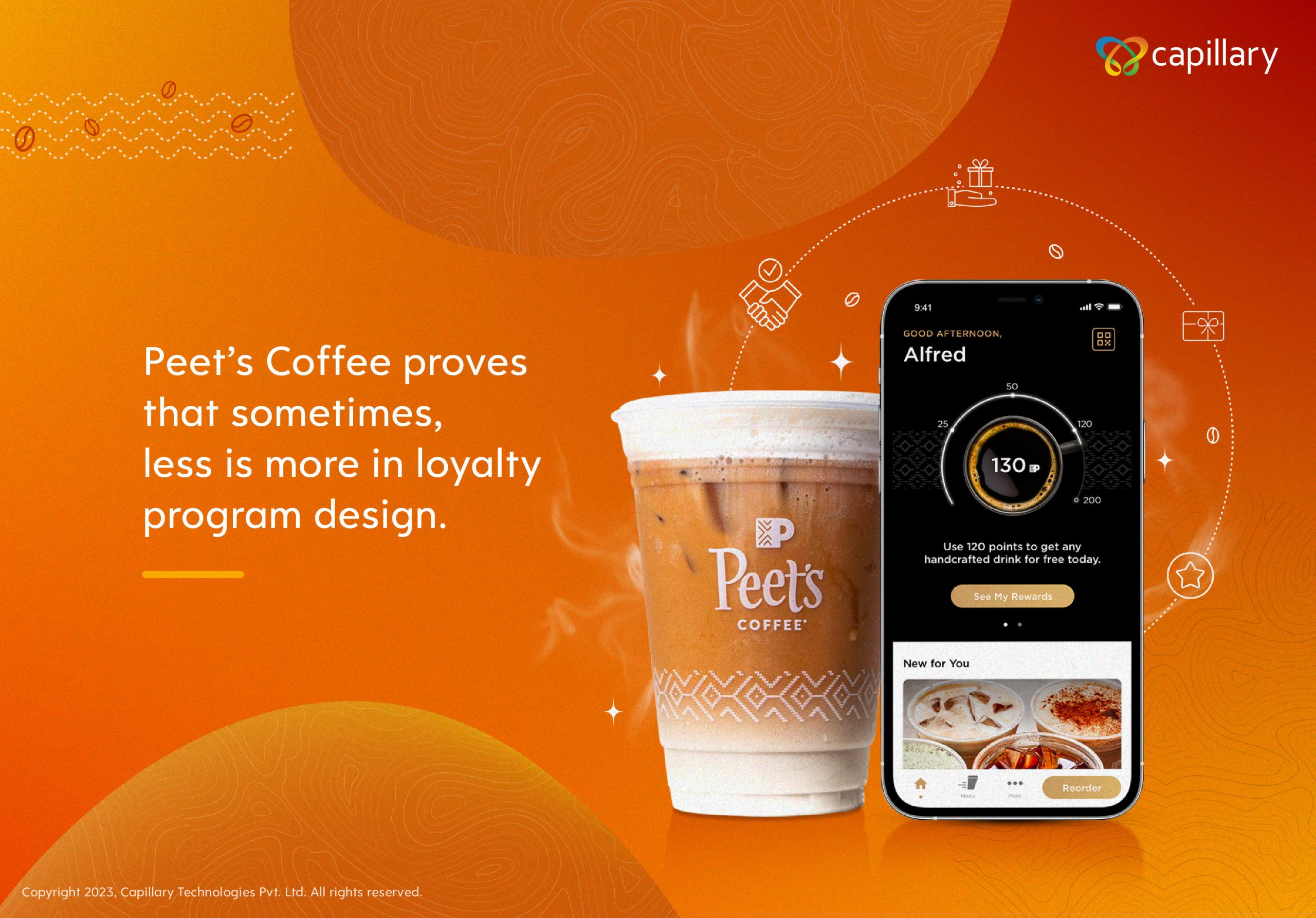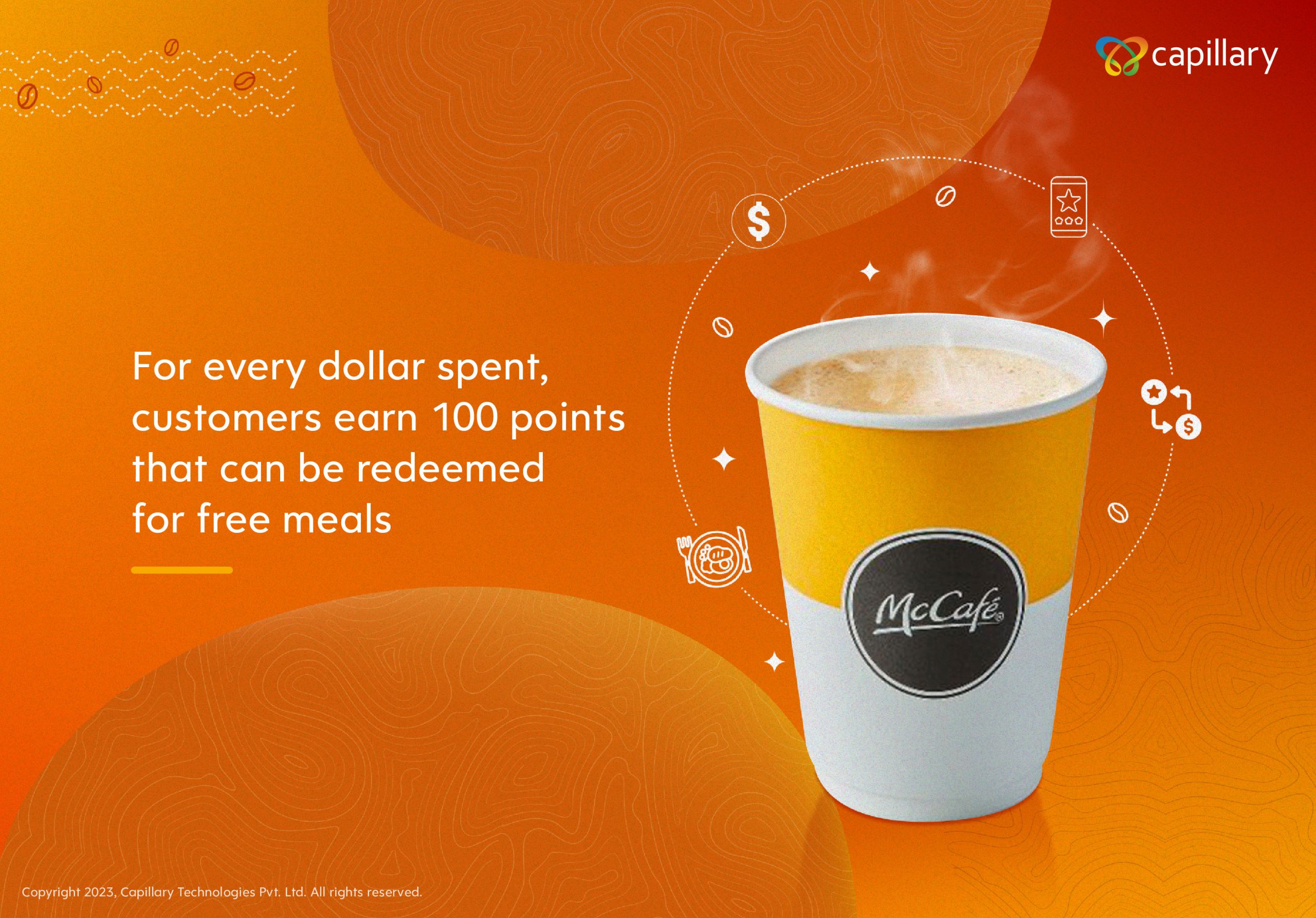Nothing screams “Good Morning” like the first sip of freshly brewed coffee.
In the United States alone, the coffee industry is a bustling arena, with approximately 59,000 coffee shops generating a staggering $45 billion in annual revenue. As the demand for that perfect cup of joe continues to surge despite the economic fluctuations, a lot of new players are looking to set foot in the market. To thrive in this competitive landscape, there’s only one tried and tested strategy- increasing the number of repeat customers using valuable loyalty programs.
In this article, we’ll explore how innovative loyalty programs have helped major American coffee brands maintain existing customer bases, increase sales, and boost profits.
1. Starbucks Rewards by Starbucks
You can’t begin a listicle on loyalty programs without naming Starbucks! With a revenue of 32.3 billion dollars in 2022, Starbucks is one of the biggest coffee brands in the world. Starbucks, a true heavyweight in the American coffee business, accounts for a staggering 75% of all coffee shop sales in the country. A significant portion of their success can be attributed to Starbucks Rewards, one of the most successful programs of its kind. This loyalty program has become the linchpin of their operations, contributing 40% of their total sales and boasting a membership base of 24.2 million in the US alone.
“Starbucks Rewards also generates massive amounts of cash for the enterprise. Although not a bank, it reported $1.6 billion in outstanding gift card balances and $196 million in breakage (unused gift card balances) in FY 2022. Those cash balances are a cash manager’s dream as they are equivalent to an interest-free loan from the customer base (source).”
2. Dunkin’ Rewards by Dunkin’ Donuts
In the year 2019, Dunkin’ QSR chains had earned a total of 1.37 billion dollars. According to a 2020 report, Dunkin’, a stalwart in the U.S. coffee shop market, maintains a 26% share of the American coffee market. In just three years after the launch of their loyalty program, an impressive 7.5 million people signed up for the Dunkin’ app. Some of the exciting features of the Dunkin’s App that have made it so convenient are:
- Redeem rewards
- Order on the go
- Digital wallet
The rewards offered by Dunkin’ go beyond just crediting points for every purchase. Customers get rewarded for several; occasions like during a business milestone, or when some festivities are around the corner, and so on.
Capillary’s Rewards+ helps brands leverage the power of rewards using AI automation to drive business and add customer value. You can read more about it here: Rewards+
3. Peetnik Rewards by Peet’s Coffee
With a revenue of 983 million dollars, Peet’s Coffee is a significant player in the market. Peet’s Coffee, with its roots in sunny Berkeley, California, has crafted a loyalty program known as Peetnik Rewards. The program’s simplicity resonates with customers, offering 125 points after the first order and one point for every dollar spent in-store or when ordering ahead. The cherry on top? A free birthday beverage and 25 points on the Peetnik Rewards Anniversary.
Peet’s Coffee proves that sometimes with a good campaign management platform less is more in loyalty program design.
4. MyMcDonald’s Rewards
Even fast-food giants like McDonald’s have recognized the potential of loyalty marketing within their McCafe brand. The coffee chain of McDonald’s McCafe generates a staggering revenue of $4 billion dollars alone. MyMcDonald’s Rewards operates on a straightforward premise: For every dollar spent, customers earn 100 points that can later be redeemed for free meals. The more points accumulated, the higher the tier, allowing for more valuable prizes. It’s a winning formula that drives customer engagement and loyalty in the quick-service restaurant sector.
5. What’s your favourite?
With International Coffee Day just around the corner on October 1, coffee brands across the globe are trying out innovative tactics to garner a larger customer base, for instance, Peet’s ‘Disloyalty Program!‘ What’s your favourite loyalty program when it comes to coffee chains and quick-service restaurants? Drop in a comment or reach out to a Loyalty Expert to see what other brands are doing!
Conclusion
The success stories of Starbucks, Dunkin’, Peet’s Coffee, and McDonald’s demonstrate that loyalty programs are not just about points and rewards; they are about building lasting connections with customers.
As we look ahead to the continued growth of the coffee industry in America, it is evident that loyalty marketing will remain a key ingredient in the recipe for success. Whether you’re a coffee industry veteran or a budding entrepreneur in the United States, taking a page from these coffee giants’ playbook and crafting a well-thought-out loyalty program can be the secret ingredient that helps your coffee shop thrive in this ever-expanding market. After all, in the world of American coffee, a loyal customer is worth their weight in beans.
If you are looking to kickstart your journey towards building a loyal customer base, we at Capillary can help you. Connect with us now and book a demo and help build a long term RoI driven loyalty program for your brand. .
People also ask ⁝
1.Which coffee loyalty programs are most successful in the US?
The most successful coffee loyalty programs in the United States include Starbucks Rewards, Dunkin’ Donuts DD Perks, and Peet’s Coffee Peetnik Rewards, which offer personalized rewards, free drinks, and exclusive member benefits.
2.How do coffee loyalty programs enhance customer engagement?
Coffee loyalty programs enhance customer engagement by providing personalized rewards, exclusive discounts, and a sense of community through member-only events and promotions, encouraging repeat visits and brand loyalty.
3.What are the benefits of joining a coffee loyalty program in America?
The benefits of joining a coffee loyalty program in America include earning points for free drinks, receiving personalized offers, getting early access to new products, and enjoying exclusive member discounts.
4.How can coffee shops in Canada implement effective loyalty programs?
Coffee shops in Canada can implement effective loyalty programs by using digital platforms for easy access, offering personalized rewards, integrating with mobile payment options, and promoting the program through social media and in-store marketing.
5.What strategies do successful coffee loyalty programs use to retain customers?
Successful coffee loyalty programs retain customers by offering tiered rewards, providing personalized offers based on purchase history, regularly updating the program with new perks, and creating a seamless and enjoyable user experience.




